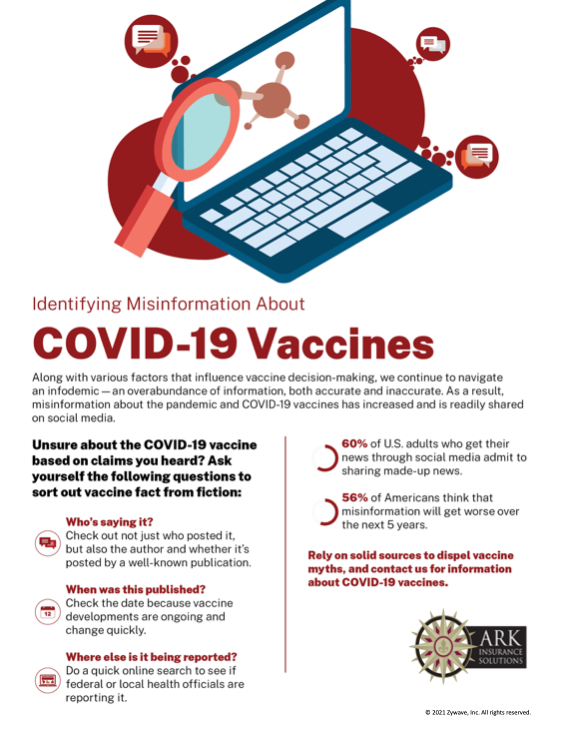Benefits and Me
/by Rebecca Yates
Balancing Caregiving and Your Career
The demands of caregiving and working a part-time or full-time job can leave you exhausted and stressed. When left untreated, chronic stress can develop into serious health problems, including depression, anxiety and cardiovascular disease.
If you are struggling to balance your career with the demands of caregiving, consider the following employer-provided resources:
- Shift flexibility—Talk to your manager about how to make your schedule less burdensome by altering your hours or telecommuting.
- Employee assistance program (EAP)—Be sure to discuss your EAP options with your HR representative. They will likely be able to chat about care management and determine if your situation qualifies you for any benefits.
- Stress management—Talk to your manager and other co-workers about organizing stress-relieving activities at the workplace.
This balancing act between providing care while working full or part-time can be both stressful and exhausting. For additional resources, contact your HR manager.
Lower Your Health Care Costs by Improving Your Well-being
Taking control of your overall well-being can greatly lower your health care costs. Lifestyle changes can help prevent or lessen the severity of health issues, which may result in fewer health expenses and greater well-being.
Consider changes to address components of well-being:
- Physical well-being—Stay physically active, eat a well-balanced diet to fuel your body, and get enough sleep each night.
- Mental well-being—Find ways to deal with stress, like journaling or meditating, and consider therapy to talk to a professional.
- Social well-being—Join a club or sports team to meet new people.
The Basics of FSAs
Flexible spending accounts (FSAs) provide you with a tax advantage to help pay for health care and dependent care. As an employee, you set aside a portion of your pre-tax salary in an account, and that money is deducted from your paycheck throughout the year. Consider the following types of FSAs:
- Health care reimbursement FSAs can be used for your deductible, copayments, and eligible health care expenses, including prescription drugs, dental costs, eyeglasses, and contacts.
- Dependent care FSAs let you use pre-tax dollars toward qualified dependent care, such as the cost of nursery schools.
FSAs are beneficial if you have out-of-pocket medical, dental, vision, hearing, or dependent care expenses beyond what your insurance plan covers.
Please reach out to one of our agents if you have questions.
Free Ways to Workout this Year
/by Rebecca YatesAlthough we are still in the midst of a global pandemic, and many are working from home or quarantines are keeping you away from the gym, there are several ways you can get that daily workout in for FREE.
Working out is not only good for the body; it is excellent for the mind. We must do our best to keep our spirits up and our bodies healthy during these trying times.
Here are a few ideas:
Walking/Running-it may seem obvious, but walking and/or running just 30 minutes a day can lower your risk for heart disease, burn calories, and elevate your mood. Additional good news, you don’t need any special gear or equipment to do it. A good pair of comfortable shoes will do the trick for walkers and a decent pair of running shoes for runners. Getting outside is literally a breath of fresh air, which we all need, especially mask-free if possible.
Meditation-with so many apps and even podcasts available on meditation, even the novice can practice this mindful technique. In just 10 minutes, you can clear your mind, soothe the soul, and reduce stress. There are also many videos on YouTube for free that you can access on your devices.
YouTube fitness classes– YouTube has an array of videos offering free workouts. From kickboxing to HIIT training and yoga, there really is something for everyone. Subscribe to your favorites and get a new workout each day.
New year, new goals? There has never been a better time to get moving within your own space or in the great outdoors while social distancing.
Uninsured COVID-19 Patients, Hospital Bills are Covered
/by Rebecca Yates
Most major health systems around the country are part of a program through the Center for Medicare and Medicaid Services that provide payments for uninsured patients who have COVID-19.
Medical bills are covered through the pandemic legislation relief, the CARES Act.
Patients may not be informed of this upfront; ask the question if it is a concern.
Special Enrollment Period (SEP)
/by Rebecca YatesIf you missed the Open Enrollment period and have had a “life” event, read on.
Did you know that certain life changes may qualify you to enroll in health insurance coverage outside of the standard enrollment period?
Did you or anyone in your household lose qualifying health coverage in the last 60 days? If so, you would qualify for the special enrollment period.
Here are some other examples of qualifying events:
- Marriage
- Birth of a child
- Gained or became a dependent
- Divorce or legal separation resulting in loss of health insurance
- Death
- Change in income
- Change in zip code/primary place of living
- Denied Medicaid or CHIP
- Gained citizenship in the United States
- Released from incarceration
If any of these apply to you or your family, please give us a call for a quote today!

Open Enrollment Begins November 1–Five Factors to Consider.
/by Rebecca Yates
Did you know there are five factors that can affect how much your health plan’s monthly premium is under the health care law?
However, individual states can limit how much these factors come into play.
These five factors are:
- Age: Premiums can be up to 3 times higher for older people than for younger people.
- Location: Where you live has a big effect on your premiums. Differences in competition, state and local rules and cost of living are the reasons why.
- Tobacco use: Insurers can charge tobacco users up to 50% more than those who don’t use tobacco.
- Individual vs. family enrollment: Insurers can charge more for a plan that also covers a spouse and/or dependents.
- Plan category: Bronze, Silver, Gold, Platinum, and Catastrophic. The categories are based on how you and the plan share costs. Bronze plans usually have lower monthly premiums and higher out-of-pocket costs when you get care. Platinum plans usually have the highest premiums and lowest out-of-pocket costs.
In addition, insurance companies may offer more benefits, which could also affect costs. Furthermore, insurance companies can not charge women and men different prices for the same plan, nor can they take your current medical history or health into account when otherwise known as pre-existing conditions.
Five Insurance Tips for Millennials
/by Rebecca Yates
Millennials find themselves in the stage of life that may require them to purchase their own insurance. After having aged out of their parent’s insurance coverage and buying or renting a place to live, coverage needs may not be as black and white as one might think.
Knowing these five tips will help navigate through the sometimes-complicated policies out there.
- Shop smart for adequate coverage- Although cost is an important factor, having the coverage you need is equally important. You may be tempted to choose the least expensive plan but when it comes time to make a claim, you will see less of a financial benefit. In fact, a high deductible could cause a unexpected financial burden.
- Look for discounts- Often insurance carriers will offer discounts for bundling services, such as your home or rental insurance and your car insurance. In addition, there are discounts for being in school and getting good grades. Be sure to ask your agent about these and other possibilities.
- Fill in the gaps- An average policy will provide basic coverage but that may not be enough for all your coverage needs. For instance, a rental or homeowner’s policy may not cover personal items such as jewelry over a certain dollar amount. Be sure to ask if you have collectables or higher value items.
- Purchase life insurance- Life insurance is important, no matter how old you are. For a millennial, it may also save you money on a policy in the long run. It is especially important if you have children. Life insurance can help your family cover unexpected costs in your absence. If you have children, a life insurance policy can support their education or child care expenses.
- Consult an independent broker or agent- Talking with an independent insurance agent is the first step in finding the coverage you need and can afford. An independent broker works with multiple providers and can help you navigate the different policies and coverage. They can also help explain some of the terms and conditions that may be difficult to understand.
Tip 5, The Singles Mom’s Guide to Health Insurance
/by Rebecca YatesBeware anything that looks too good to be true!
Yes, your parents were actually right on this one.
Insurance is just math. If it’s cheaper, there is a reason. I have found that most of the time those reasons look like limits on care.
For example, many “cheaper” policies limit cancer coverage to $500,000. Sorry, but many
forms of cancer can eat that up in a month or less. In those types of plans, you would be
left holding the bag on the remaining cost of treatment, or WORSE, having the hospital or
physician refuse to treat you.
If you are looking at insurance options and one is much cheaper than the others, find out
why before you sign up! They often have clauses that lock you in for a year or may not be
qualified coverage so you can’t get in through the marketplace. It may be cheaper because
it excludes something you don’t care about (like maternity when you are done having kids),
but you need to read the fine print. And I mean the 130+ page document that outlines
everything.
Or ask a knowledgeable local agent who has probably read the contract for fun,
like the insurance nerds we often are.
To download the entire guide, click here.
Tip 4, Single Mom’s Guide to Health Insurance
/by Rebecca YatesKnow your max liability
So many times, people get hung up on getting a lower deductible and having copays for something to be considered a “good” plan. However, most Americans miss the absolute most important thing in their health insurance documents: The Out-of-Pocket Maximum.
This is the most you would pay in one calendar year if everything went horribly wrong. If
you have health insurance, this is the maximum of liability and it’s a number you need to be
aware of!
For example:
I often have clients tell me they want the “best” plan and are willing to pay for it! They want a
$250 deductible. In my state, the $250 deductible plan has a $7,900 out-of-pocket maximum
and is often 30% higher than an HSA plan for monthly premiums.
However, if they enroll in an HSA they can often get a lower out of pocket maximum. My plan
is a $4,500 deductible, but that is also the out-of-pocket maximum. At 30% less expensive
per month, it’s an absolute bargain! But most people ignore this plan because all the see is
the deductible.
Let’s look at an example:
Johnny needs a $60,000 heart surgery.
Plan 1: He’s paying $500 a month to get the lower deductible. That equates to $6,000 a year
in insurance premiums. When he has his surgery, he will pay $7,900. So, in total he spent
$13,900. Which beats the pants off $60,000 any day! But it’s not the best he could have done.
Plan 2: He is now enrolled in the HSA plan. He is paying $350 a month. That equates to
$4,200 a year in insurance premiums. BUT when he has his surgery, he pays $4,500. That
means he spent $8,700 less than on the “best” plan. But wait! He also got to put that $4,500
through an HSA account and gained the additional tax savings.
Read more here: The Single Mom’s Guide To Health Insurance
Improve Your Employees’ Health
/by Rebecca YatesWe are excited to offer Engage Wellness to enhance health insurance plans you are already offering.
Engage Wellness is a great way for businesses with group health plans to save money through tax savings while gaining healthier employees through benefits like:
If you already offer health insurance, there will be no out of pocket expense and will actually lower your benefit costs without changing your plan.
Contact us at 801-901-7800 to learn more!
ARK Insurance Solutions
655 East 4500 South, Ste 210
Salt Lake City, UT 84107
Phone: 801-901-7800
Fax: 801-305-4947
Email: info@ark-ins.com















